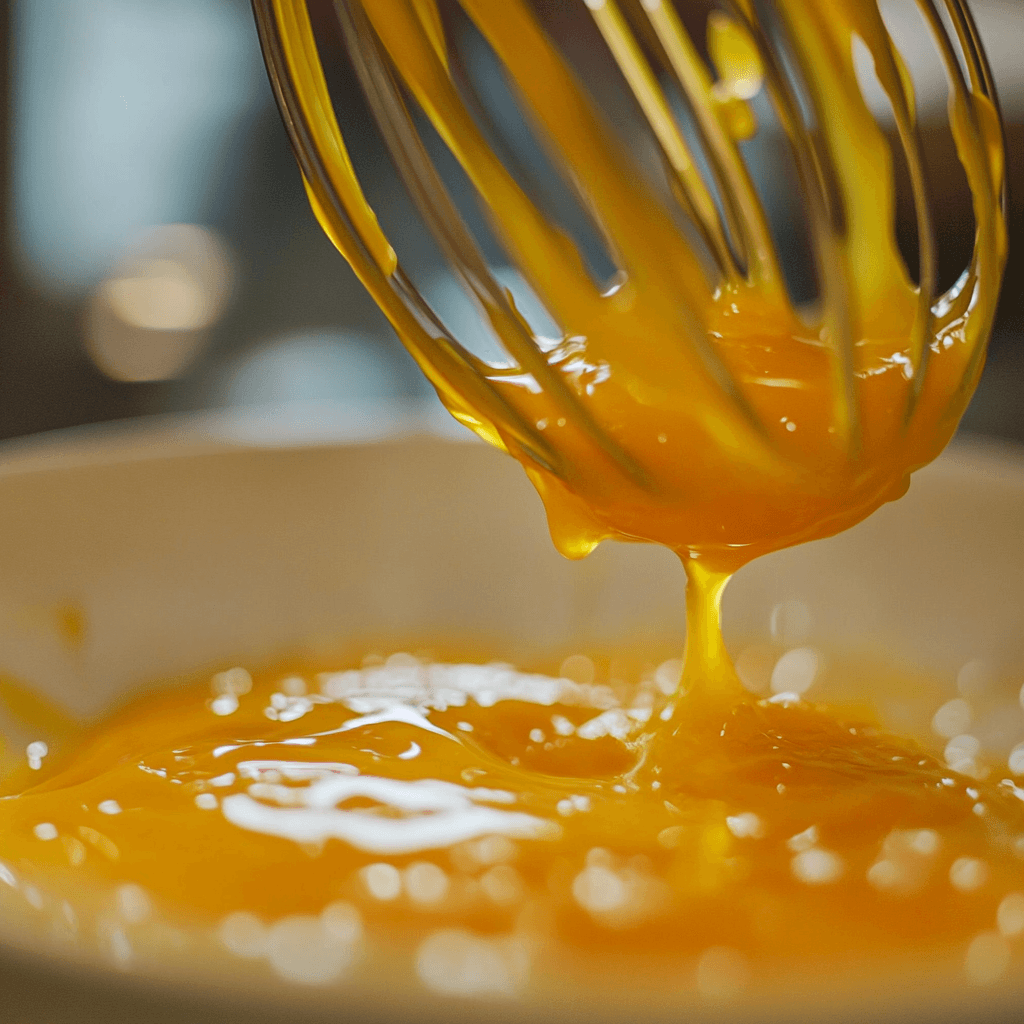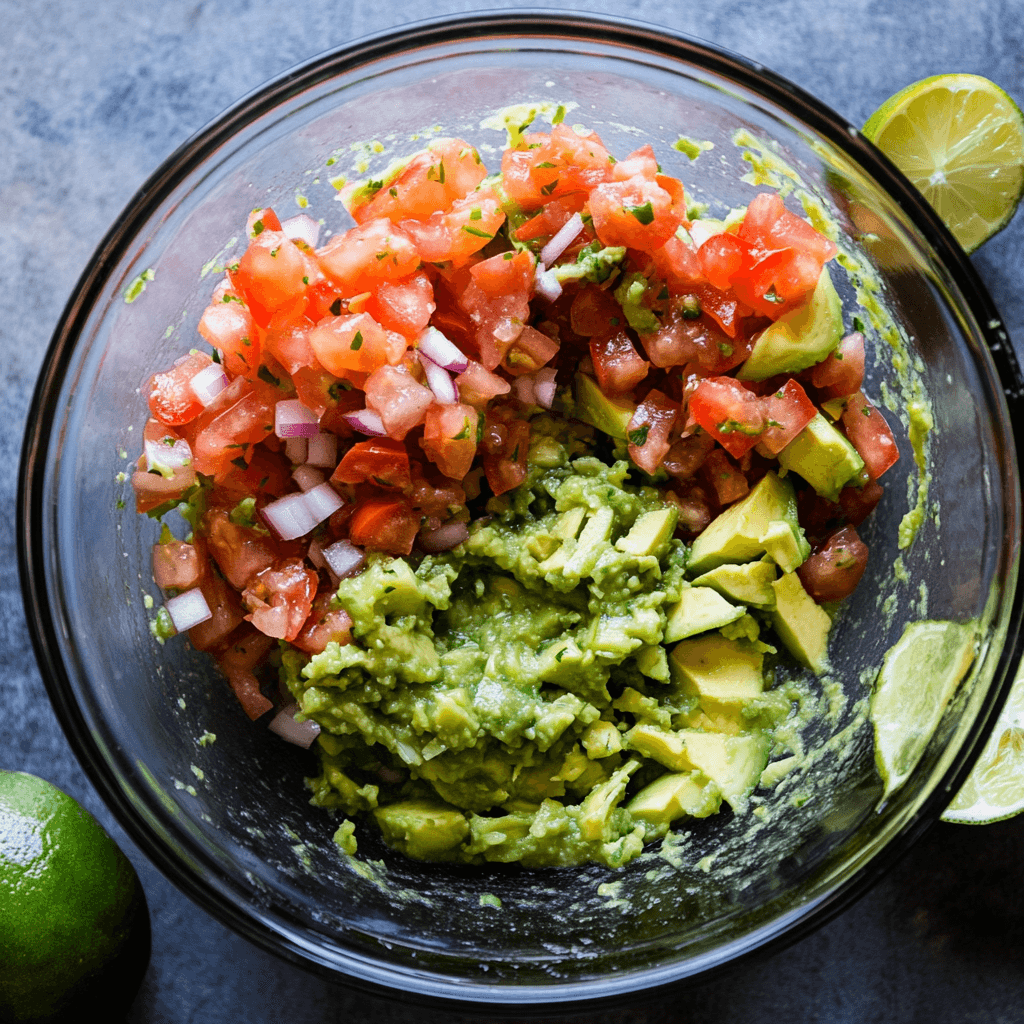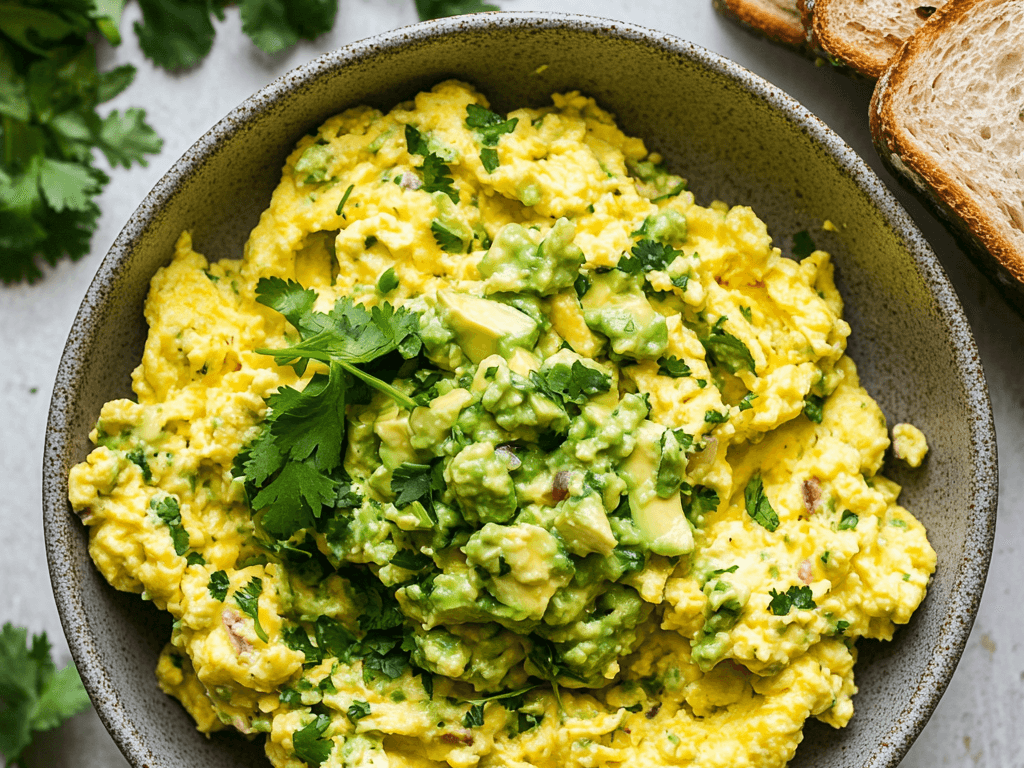Are you longing for a morning meal that feels both comforting and exciting? Sometimes, all it takes is a simple plate of fluffy scrambled eggs paired with a vibrant, creamy avocado salsa to remind you that food can be an everyday delight rather than just a necessity. If you’re ready to discover how to make fluffy scrambled eggs that melt in your mouth and how to whip up a luscious, flavor-packed topping, you’re in the right place. This guide will walk you step-by-step through every detail, so you can master your breakfast routine and impress anyone lucky enough to snag a seat at your table.
Table of Contents
Emotionally Resonant Opening
Imagine yourself curled up in your cozy kitchen nook on a quiet weekend morning. The sun’s first gentle rays peek through your window, and the day feels full of promise. You’ve just brewed a steaming cup of coffee or tea, and now all you want is a meal that feels like a warm embrace. Enter fluffy scrambled eggs: soft folds of velvety eggs that practically dissolve on your tongue. But what if you could boost that blissful feeling with an unexpected twist? A creamy avocado salsa—zesty, smooth, and loaded with good-for-you fats—turns your breakfast into a memorable culinary experience. If you’ve ever dreamed of such a meal, you’re about to learn how easy it is to bring that vision to life.
Whether you’re hosting brunch for close friends or simply treating yourself, there’s something magical about seeing those light, pillowy eggs slide onto a plate, crowned by a tangy and rich avocado mixture. This is no ordinary breakfast, and by the end of this guide, it’ll be your favorite way to start the day. Ready to crack some eggs and transform your mornings?
Understanding the Basics of Making Fluffy Scrambled Eggs
In your quest to master how to make fluffy scrambled eggs, it’s essential to understand a few cooking fundamentals. The good news is that none of these principles are complicated, and once you grasp them, they’ll serve you well for countless breakfast spreads.
- Fresh is Best
You’ve probably heard this before, but it can’t be overstated. Fresh eggs, preferably cage-free or organic, generally yield a more vibrant color and richer flavor. If you crack open an egg and notice a bright, orange-hued yolk, that’s typically a good sign you’re starting with a top-tier product. - Whisking Technique
The texture of your scrambled eggs depends heavily on how much air you incorporate before cooking. When you whisk thoroughly, you build tiny air bubbles within the egg mixture. Those bubbles help create the delicate, airy consistency you’re seeking. - Low and Slow
If you crank up the heat in a hurry, you’ll likely end up with stiff, rubbery eggs. Cooking at low to medium heat gives the proteins time to set gently, resulting in a softer bite and more moisture. - Season Sensibly
While some people season their raw eggs before cooking, others argue that adding salt too early causes the eggs to release extra moisture. If you’re a beginner, try seasoning just before serving. Experimentation will help you find what suits your taste buds best. - Gentle Folding
Once you start cooking, treat the mixture like you would a delicate batter. Stir or fold slowly to form large, fluffy curds. Overstirring breaks those curds into tiny bits, leading to a less impressive presentation.
Understanding these simple elements can make all the difference between a so-so scramble and the dreamy softness you crave. Now that you’ve got the groundwork, it’s time to gather the items you need to make your culinary vision a reality.
Ingredients and Equipment You’ll Need
Crafting memorable scrambled eggs and a delicious, creamy avocado salsa doesn’t require fancy gadgets or obscure ingredients. Most of what you need is likely already in your kitchen, but let’s be sure you have everything ready before you begin.
Essential Ingredients for Fluffy Scrambled Eggs
Below is a handy table for the basic items. Feel free to adjust quantities based on how many portions you plan to serve.
| Ingredient | Quantity | Notes |
|---|---|---|
| Eggs | 2–3 per person | Aim for fresh, large eggs for maximum flavor |
| Milk or Cream (optional) | 1 tbsp per egg | Helps increase creaminess, but can be omitted if you prefer |
| Butter or Olive Oil | 1 tsp per serving | Prevents sticking; also enriches the final taste |
| Salt and Pepper | To taste | Season lightly, either before cooking or right after |

Ingredients for the Creamy Avocado Salsa
This tangy, velvety salsa is the perfect companion to your eggs, adding contrast and freshness to your plate:
| Ingredient | Quantity | Notes |
|---|---|---|
| Ripe Avocados | 1–2 | Should yield slightly when pressed; if too firm, let them ripen a bit more |
| Tomato (optional) | 1 small, diced | Contributes freshness and color; skip if you prefer a simpler salsa |
| Red Onion (optional) | 2 tbsp, diced | Delivers crunch and a mild bite |
| Lime Juice | 1 tbsp | Prevents browning and provides tang |
| Salt and Pepper | To taste | Balances flavors; adjust carefully |
| Cilantro (optional) | 1 tbsp, chopped | Brightens the mixture with a fresh, herbal note |
Recommended Equipment
- Non-Stick Skillet: This tool helps minimize the use of additional oil or butter, ensuring your eggs remain soft and don’t overcook.
- Whisk or Fork: You’ll want something sturdy enough to incorporate plenty of air into the egg mixture.
- Spatula: A heatproof silicone or rubber spatula is ideal for gently folding your eggs.
- Mixing Bowls: Have at least one bowl for whisking eggs and another for preparing the salsa.
- Cutting Board and Knife: You’ll need these to slice and dice your produce neatly.
With your ingredients and equipment set, you’re already one step closer to the perfect bite. So let’s keep the momentum going and dive into the exact steps you’ll follow to craft your new go-to meal.
Step-by-Step Guide to Fluffy Scrambled Eggs

You’ve gathered what you need and have a grasp on the basics. Now it’s time for the fun part: turning raw eggs into that glorious, soft scramble. The methods below are designed to help you navigate each moment of the cooking process with confidence.
Step: 1 – Prepare Your Egg Mixture
- Crack the Eggs
– Choose a clean mixing bowl and crack in your eggs. Plan on about two to three eggs per serving.
– Make sure to discard any stray shells, and don’t beat yourself up if you occasionally drop a tiny piece—simply fish it out with a spoon. - Add Milk or Cream (Optional)
– If you love extra richness, incorporate one tablespoon of milk or cream for each egg. This not only boosts the flavor but also contributes to a softer texture. - Whisk Thoroughly
– Here’s where you start building that fluff factor. Whisk in a quick, circular motion for 30–45 seconds. You want to incorporate as much air as possible.
– You can add a tiny pinch of salt, but some chefs prefer waiting until the eggs are nearly done so the flavor doesn’t dilute.
2 – Heat the Pan
- Low-to-Medium Heat
– Set your skillet on the stove and turn the heat to low or medium-low. High heat is your enemy when your goal is soft, luscious eggs.
– Let the pan warm for a minute so the butter or oil melts evenly without burning. - Add Butter or Oil
– Measure out about a teaspoon per serving. Butter gives a classic flavor, but olive oil provides a lighter feel.
– Swirl the pan or use your spatula to coat the cooking surface thoroughly.
Step 3 – Cook Gently and Fold
- Pour the Egg Mixture
– Slowly pour your whisked mixture into the skillet. You should see it spread out evenly. If the pan is too hot, you’ll notice the edges cook too fast, leading to a tough result. - Allow the Eggs to Set Briefly
– Give your eggs a few seconds to begin forming a cooked layer at the bottom. You’re looking for that delicate balance: enough time to start solidifying but not so long that they turn rubbery. - Begin to Fold
– Using your spatula, push the eggs from the edges to the center, forming large, soft curds. This folding technique prevents overmixing and maintains the airy structure you worked to create. - Remove from Heat
– The eggs will continue to cook slightly even after you turn off the heat. Remove the pan from the burner when they’re just shy of fully done, ensuring they stay moist and tender.
By following these steps, you’ll achieve those enviable clouds of flavor. Now, let’s move on to the second hero of this dish: a refreshing, creamy avocado salsa that enhances the eggs rather than overshadowing them.
Making the Creamy Avocado Salsa
Your eggs are almost ready to take center stage, but every star needs a strong supporting cast. This creamy avocado salsa will do more than support your eggs—it’ll elevate them. Bursting with healthy fats, tangy lime juice, and a hint of herbs, this topping adds a dynamic element of freshness and richness to your breakfast.
Step : 1 – Dice & Mash
- Select and Halve Your Avocados
– Be sure your avocados are at that sweet spot: slightly soft but not mushy. A quick squeeze should yield gentle resistance.
– Cut each avocado lengthwise, twist the halves apart, and remove the pit carefully with a spoon or a knife. - Scoop and Mash
– Scoop the flesh into a mixing bowl. Drizzle it with a tablespoon of lime juice immediately to preserve the bright green color.
– Mash the fruit with a fork until you get your desired consistency. If you prefer chunkier salsa, mash lightly. For a smoother, creamier texture, mash more thoroughly.
2 – Mix in Additional Ingredients
- Add Diced Onion and Tomato
– Fold in a couple of tablespoons of finely chopped red onion for sharpness and possibly a small diced tomato for a burst of color.
– If you’re not into onions or tomatoes, feel free to substitute with other vegetables like diced bell peppers. - Season Gently
– Sprinkle in salt and pepper to taste. Don’t go overboard with the salt initially; you can always add more if you feel it’s needed.
– If you’re a fan of heat, toss in a bit of diced jalapeño or a few drops of hot sauce.
3 – Adjust for Creaminess
- Assess Consistency
– Take a quick sample of your mixture. If you find yourself wanting a richer mouthfeel, blend in a spoonful of Greek yogurt or sour cream for an extra velvety finish. - Taste and Refine
– Taste the salsa and see if you need more lime, salt, or pepper. A balanced avocado salsa should have a light tang, a hint of spice, and a smooth or chunky feel depending on your preference.
By now, you have all the components needed to assemble a breakfast that straddles the line between everyday and gourmet. Let’s talk about how to serve this masterpiece in a way that makes your morning routine feel truly special.

Serving Suggestions
You’ve done the work to make flawless scrambled eggs and whip up a creamy avocado salsa that’s fresh and bright. Presenting your meal is part of the pleasure of cooking—think of it as the final brushstroke on your creation.
- Plating the Eggs
- Transfer your fluffy eggs onto a warm plate. If you like, you can sprinkle a final pinch of salt or pepper right on top. This is also a perfect time to add any herbs like chives or parsley for extra color.
- Spoon the Salsa Over or Alongside the Eggs
- Spoon a generous portion of the avocado salsa on top of your eggs, or place it on the side if you prefer to dip each forkful. If you’re a cheese enthusiast, consider adding a small sprinkle of crumbled feta or cotija for a tangy bite.
- Add Complementary Sides
- If you’re aiming for a fuller meal, think about sides like toast, breakfast potatoes, or sautéed veggies. A slice of whole-grain toast can help you scoop up leftover salsa, while crispy potatoes provide a savory balance to the eggs’ softness.
- Garnish for a Visual Pop
- Even a simple addition like a sprig of cilantro or a sprinkle of paprika can make your plate look restaurant-worthy. Visual appeal can be just as satisfying as the taste, so don’t skip this opportunity to make your food look as good as it tastes.
With these finishing touches in place, you’ve taken a humble breakfast staple and turned it into something memorable. But before we wrap up, let’s address a few key details and questions that might crop up as you move forward on your journey to perfect scrambled eggs.
Serving Ideas and Pairings
- Pair this salsa with these authentic Mexican breakfast tacos for a flavorful breakfast treat.
- Use it as a topping for low-carb chicken tacos for a guilt-free dinner.
- Drizzle it over your favorite sweet potato avocado toast for a nutritious snack.
Conclusion
You set out to learn how to make fluffy scrambled eggs that are light as air and to pair them with a creamy avocado salsa bursting with flavor. By paying attention to fresh ingredients, whisking technique, heat management, and thoughtful seasoning, you’ve uncovered the secrets to a morning meal that can brighten any day. Whether you’re cooking for a family brunch or savoring a quiet meal alone, these techniques and recipes give you the power to transform ordinary eggs into something truly special.
Each fold of your spatula is a small act of care, and each spoonful of avocado salsa is a reminder that simple ingredients can be elevated when handled with attention and love. Now you know exactly which steps to follow and how to fine-tune them to suit your preferences. And remember, cooking is an adventure—you’re encouraged to keep experimenting, adjusting flavors, and making each dish your own.
The next time you crave a comforting meal that also feels a bit luxurious, consider returning to this guide. Your eggs will be fluffier and tastier than you ever thought possible, and your creamy avocado salsa will be so fresh and inviting that you might start making it for lunches, dinners, and snacks in between.
Don’t be surprised if the aroma of melting butter or the sight of glimmering avocado becomes a highlight of your day.
Frequently Asked Questions (FAQ)
Can I Prepare the Creamy Avocado Salsa in Advance?
You can, but be mindful that avocados brown quickly once exposed to air. If you want to make your salsa in advance, add extra lime juice and place a layer of plastic wrap directly on the surface of the mixture before sealing it in an airtight container. Keep it in the fridge until you’re ready to serve. Even then, it’s best to use it within a day or so for maximum freshness.
Should I Season My Eggs Before or After Cooking?
This one depends on personal preference. Some people add a pinch of salt and pepper to the egg mixture right before whisking, while others argue that waiting until the end preserves more of the egg’s moisture. If you’re new to cooking eggs, try both methods and see which texture you prefer. Either way, do it sparingly to avoid overpowering the delicate flavor of the eggs themselves.
What’s the Secret to Making My Scrambled Eggs Ultra-Fluffy?
The trick is twofold: thorough whisking and gentle cooking. Whisk vigorously to incorporate air bubbles. Once you pour the mixture into your pan, keep the heat low and fold rather than stir. Removing them from the heat a little early also keeps them moist and prevents them from getting too dense.
Are There Any Dairy-Free Alternatives?
Absolutely. If you’re avoiding dairy, use olive oil or a dairy-free butter alternative to grease your pan. You can skip the milk or cream; your eggs will still be fluffy if you incorporate enough air by whisking. The salsa itself is naturally dairy-free (unless you add a dab of Greek yogurt or sour cream), so you’re already set with a flavorful, plant-based topper.
How Do I Store Leftover Scrambled Eggs and Avocado Salsa?
Ideally, scrambled eggs are best enjoyed fresh and hot. If you do need to store them, place them in a sealed container and keep them in the refrigerator for up to two days. When reheating, do so gently in a skillet over low heat or in short bursts in the microwave. As for avocado salsa, you’ll want to press plastic wrap against the surface to limit browning and use it within 24 to 48 hours for optimal flavor and appearance.
Can I Spice Up My Scrambled Eggs Even More?
Go for it! You can add grated cheese, diced chilies, chopped herbs like basil or chives, or even a dash of paprika. The key is to fold these extras in close to the end of the cooking process to maintain the eggs’ fluffiness. Have fun with it and personalize them to your taste—cooking is all about experimenting.
